Success stories: Tales of improving our native biodiversity
Barry Rice & Mandy Tu/GIST
November 2001
Photographs
Click
on the images below to view photographs related
to this success story.
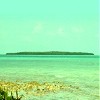
|
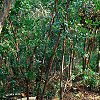
|
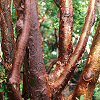
|

|

|
|
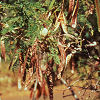
|
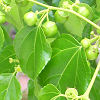
|
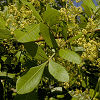
|

|

|
|
The Setting
The Florida Keys are a string of more than 1,800 islands that arc
southwestward 240 km (150 miles) from the southernmost tip of Florida.
The rocky islands that make up the Florida Keys support a number of
specialized plant communities. The shores of these islands are typically
populated with three species of mangroves, while a grassy transition zone
that provides food for a diverse array of native mammals occurs just
slightly inland. High ground near the center of each Key supports rocky
pinelands and botanically diverse forests called hardwood hammocks.
The Keys and southern Florida are the only tropical habitats in the continental United States, and they provide habitat for numerous plant species found nowhere else in the United States. For instance, hardwood hammocks support a richer biodiversity of trees than any other forest in the United States-about 120 tree species are found there!
In addition to this rich diversity of native plants, many species of terrestrial and marine animals also make their home in the Keys. An abundance of birds pass through the Keys in the spring and fall during the annual migration along the eastern and central United States. Clearly, the Keys lie at a "biological crossroads" between the temperate habitats of North America and the tropical habitats of the West Indies.
The Invaders - non-native species
Already heavily damaged by development, the Keys now face a new threat to
their rich native biodiversity: invasion by non-native species. Introduced
intentionally or accidentally by humans, invasive species can spread into
natural areas, and once established, they can grow and reproduce so rapidly
that they outcompete, damage and displace the native plants. The animals
that depend upon the native plants suffer next.
Six of the worst plant invaders to the Florida Keys are Australian pine (Casuarina equisetifolia), Brazilian pepper (Schinus terebinthifolius), Asian lather leaf (Colubrina asiatica), seaside mahoe (Thespesia populnea), lead tree (Leucaena leucocephala), and bowstring hemp (Sansevieria hyacinthoides).
If left unchecked, these invaders could transform the vibrant, biologically diverse native forests into a woodland of non-native trees that provide little native food or habitat for native birds, mammals, or insects.
A Success Story
Alarmed by the increasing infestations of invasive non-native plants, a
broad-based coalition of groups representing environmentalists, utilities,
municipalities, and county, state, and federal departments formed the
"Florida Keys Invasive Exotic Task Force." Their goal was to
eliminate invasive non-native plants from the Keys, and to keep them out
in the future.
First, they started by mapping the vegetation of the Florida Keys using GIS technology. Specifically, they were looking for invasive species infestations. Once this map was created, they began strategizing and prioritizing their next steps. They produced an educational brochure (Keys' Invasive Exotic Removal Guide) that was distributed to thousands of property owners.
Next, they identified West Summerland Key as a site for a demonstration project. This 50-acre Key was heavily infested with Brazilian pepper, Australian pine, seaside mahoe, and lead tree. Using labor contributed by Girl Scouts, Boy Scouts, AmeriCorps, Alternative Spring Breakers, and local residents (780 volunteers in all!), the Task Force started removing the invasive species. It took nearly three years and $40,000 in grants and in-kind services (tree felling, brush chipping, etc.) from Task Force partners, but now West Summerland Key is 99% free of non-native species. Where the invasive species were removed, more than 1,000 native plants were planted.
The Task Force is now taking their successful approach to a new level, as The Nature Conservancy (a Task Force member) organized a "GreenSweep Initiative", led by Chris Bergh and Alison Higgins, two energetic weed warriors. The GreenSweep Initiative will help with the training and coordination of volunteers for projects that would otherwise not find sufficient funding. The GreenSweep Initiative will also work with residential neighborhood organizations to encourage the use of non-invasive plants in landscaping.
With cooperative groups like the Florida Keys Invasive Exotics Task Force, and innovative projects such as the GreenSweep Initiative, the threat of invasive species can be faced. Unique habitats such as the Florida Keys can be protected, at least in part, and the rich native biodiversity preserved for another generation.
| Florida Keys Invasive Exotics Task Force members: |
| Private: |
| Florida Exotic Pest Plant Council |
| Clean Florida Keys, Inc. |
| Florida Keys Environmental Restoration Trust Fund |
| Key Deer Protection Alliance |
| The Nature Conservancy |
| City Electric System |
| Florida Keys Electric Cooperative |
| Friends and Volunteers of Refuges |
| Municipalities: |
| Village of Islamorada |
| Monroe County Division of Environmental Resources |
| Monroe County Cooperative Extension Service |
| Monroe County Grants Department |
| Monroe County Public Works |
| Monroe County Land Authority |
| State of Florida: |
| Division of Parks and Recreation |
| Bureau of Invasive Plant Management |
| Division of Coastal and Aquatic Managed Areas |
| Environmental Resources Permitting Office |
| Florida Fish and Wildlife Conservation Commission |
| Florida Department of Transportation |
| Florida Department of Community Affairs |
| South Florida Water Management District |
| Federal Government: |
| U.S. Fish and Wildlife Service |
| U.S. Navy |
Acknowledgements
The WIST staff thank both Chris Bergh and Doria Gordon for their
information on the work in the Florida Keys with the GreenSweep Initiative.
More Information
For more information, contact Barry Rice, Associate Scientist,
The Nature Conservancy: 530-754-8891, bamrice(at)ucdavis.edu.
Review articles with more detailed information about some of these species can be obtained from the TNC Wildland Invasive Species Team web site.
This document in other formats: MS Word, Adobe Acrobat
This article may be treated as a press release and may be quoted by the media in part or in full. Publication quality versions of images on this page can be obtained from the Wildland Invasive Species Team by sending email to bamrice(at)ucdavis.edu.


